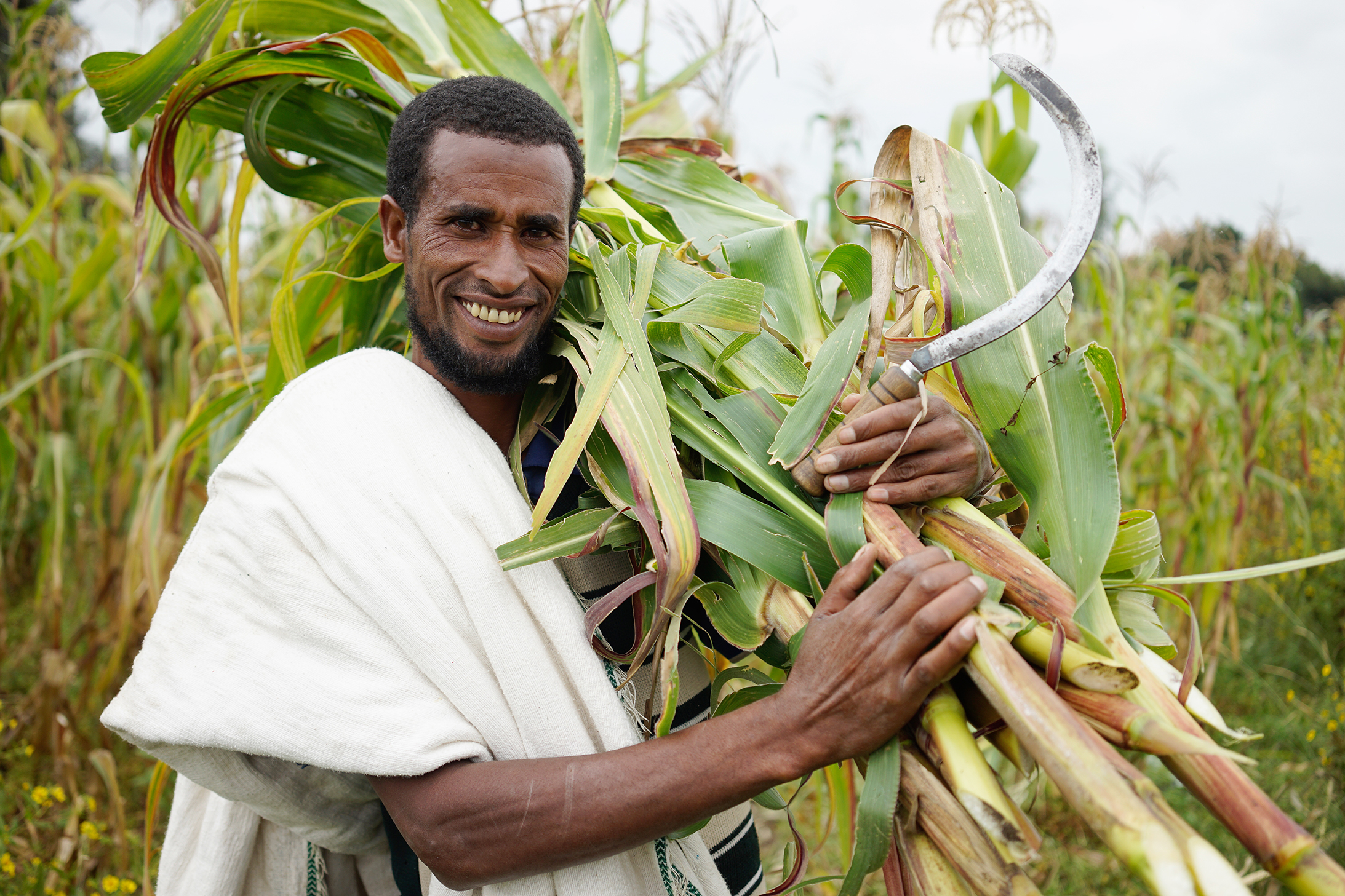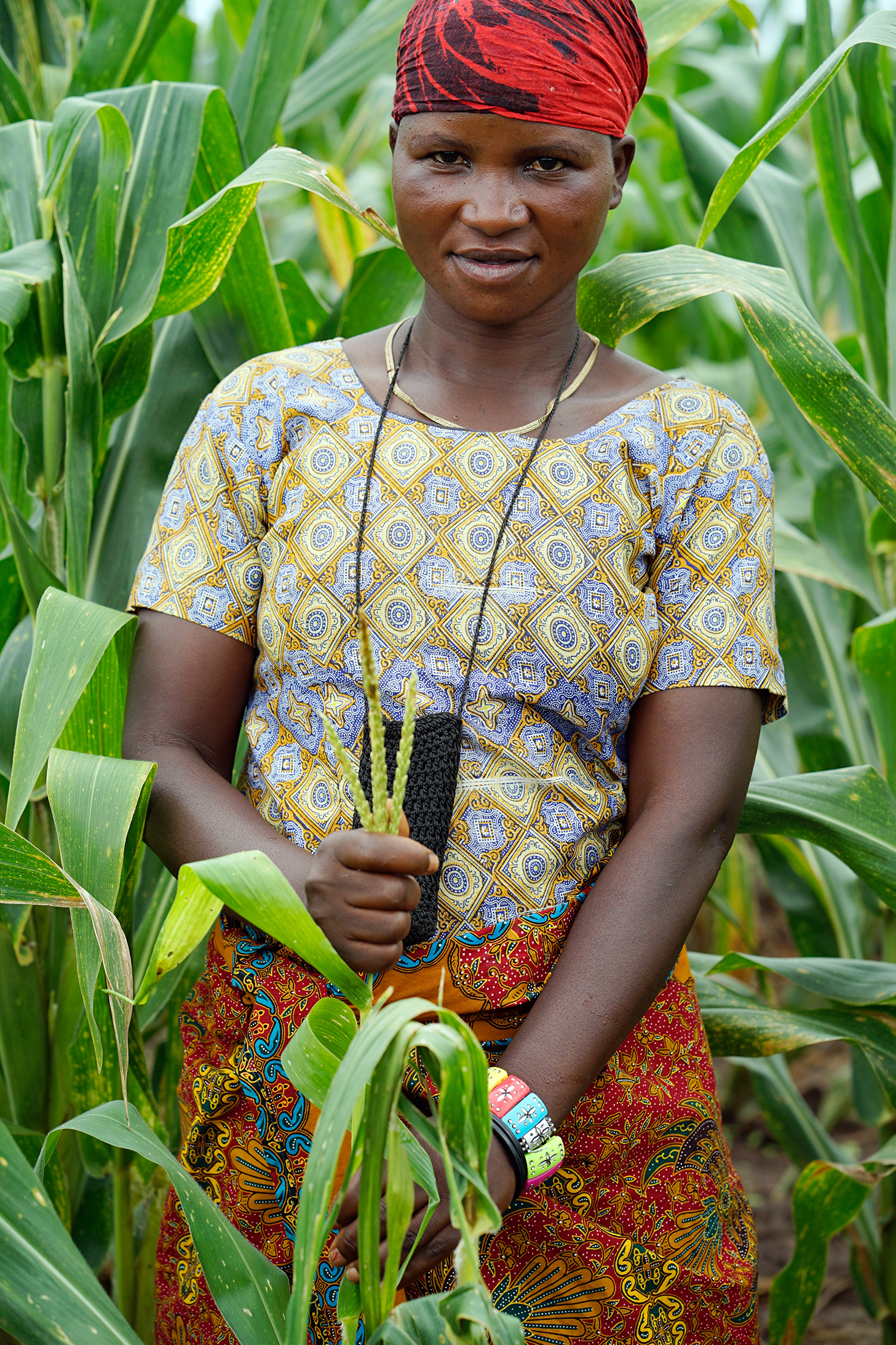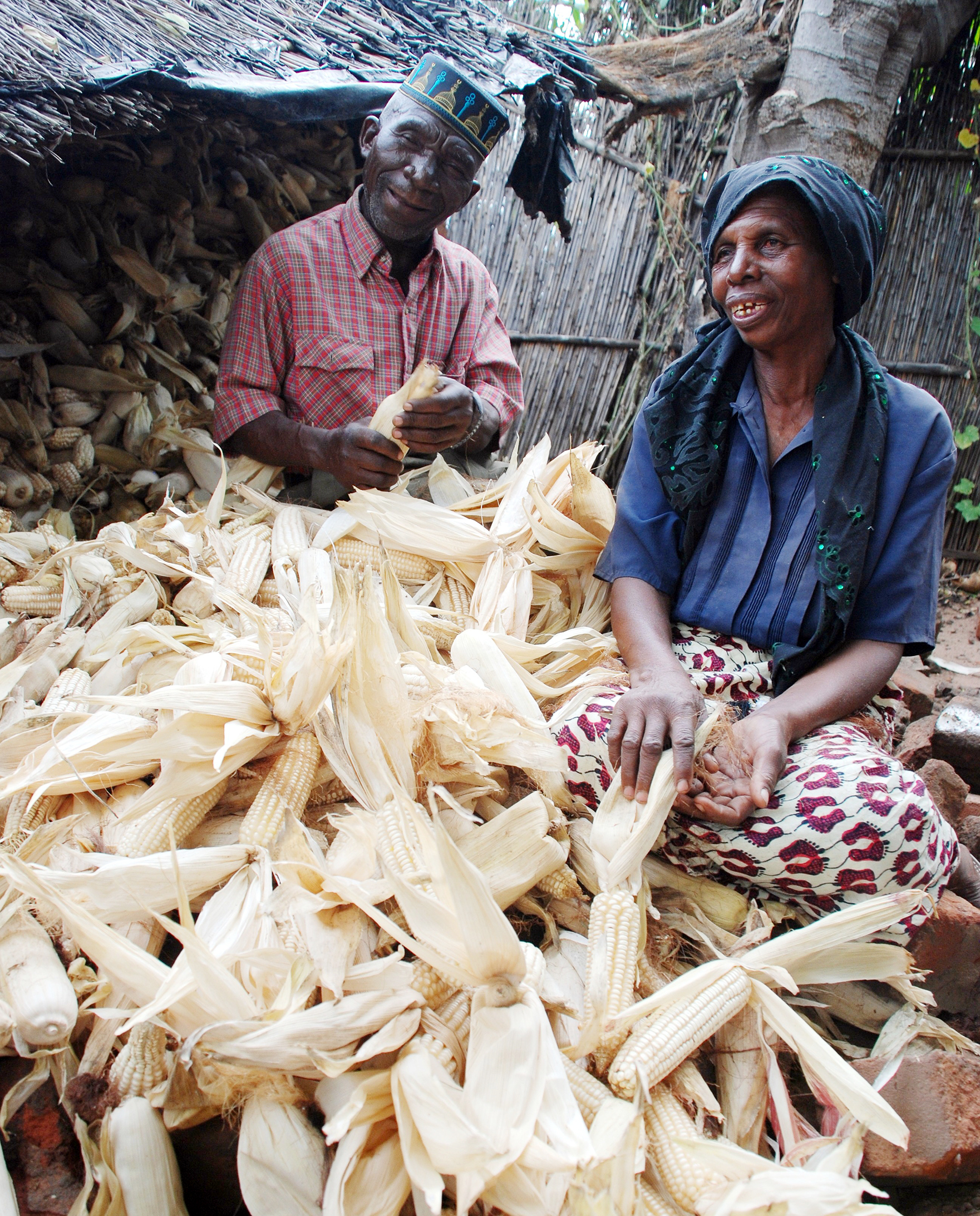Two decades of maize improvement in sub-Saharan Africa
CGIAR maize varieties have become prominent in the region, helping smallholder farmers develop their knowledge to increase yield

“We learned about techniques like spacing and understanding the potential yields of the different varieties,” said Mary Sikirwayi, a maize farmer from Rimbi village, Murewa district, Zimbabwe, who took part in maize on-farm trials conducted by CIMMYT.
Sikirwayi’s story is one of many to emerge from two decades of longstanding, CGIAR-led work on improved maize for sub-Saharan Africa, summarized in a comprehensive review titled “Impacts of CGIAR Maize Improvement in sub-Saharan Africa, 1995-2015.”

This study reports on the adoption and impacts of CGIAR-related maize varieties in a selection of major maize-producing countries in sub-Saharan Africa from 1995 to 2015.
Focusing on 18 African countries, the study shows that around 60% of the 1,345 maize varieties released had a known or reported CGIAR parentage.
By 2015, about 34% of the total maize area in the 18 countries, representing 9.5 million hectares, was cultivated with relatively new CGIAR-related maize varieties (released between 1995 and 2015), while another 13% of the region’s total maize area was cultivated with CGIAR-related maize varieties released before 1995.
Countries targeted for this study were categorized based on their area under maize cultivation into “large producers” (eight countries averaging more than one million hectares of maize per year during 1995 to 2015) and “small producers” (ten countries with less than one million hectares).
The share of released maize varieties with CGIAR genetics was found to be similar across both groups of countries. However, among the large producers, several varieties were based on crosses between CGIAR and non-CGIAR maize germplasm; this equates to 24% of all released varieties, compared to 10% in the small producer group. A more active private seed sector and stronger domestic breeding capacity within the large producers is the likely cause of this difference.
For both producer categories, varietal releases with a CGIAR relationship were released more quickly than non-CGIAR varieties. This was particularly pronounced during the study’s final five years, when 304 varieties with a CGIAR relationship were released compared to 60 non-CGIAR varieties. Stepping up CGIAR maize breeding activities and strengthening regional networks since the mid-1990s may have contributed to this pattern.
Exciting germplasm releases include those resistant to major diseases, such as maize streak virus, gray leaf spot, maize lethal necrosis, and those tolerant to drought and low soil fertility.

The farmer demand for traits such as these is reflected in the findings: even in countries that released a few varieties each year relative to their maize growing area — called a low varietal release “intensity” — the share of CGIAR-related maize varieties was a substantial 87%.
CIMMYT scientists discovered a strong association between the seed type — hybrids versus open-pollinated varieties — and CGIAR involvement in varietal development.
A large proportion (73%) of maize varieties released in the region during the study timeframe were hybrids; they accounted for 65% of all CGIAR-related releases and 88% of non-CGIAR releases.
Many of these hybrids were submitted for registration and subsequent commercialization by small seed companies.
For open-pollinated varieties, which typically have cheaper seed than hybrids, a vast majority (84%) had a CGIAR relationship.
The research incorporated economic analysis of maize improvement for sub-Saharan Africa. In 2015, the aggregate yearly economic benefits of using newer CGIAR-related maize varieties (released after 1994) were estimated to be between $0.66-1.05 billion. Compared to the benefits, global investment in CGIAR maize improvement was modest. At its peak, yearly investment reached about $30 million.
The report’s data is collected from an expert survey among maize breeders in CGIAR and partner institutions, and secondary sources and publications.
This work would not have been possible without the support of our partners Bill & Melinda Gates Foundation, United States Agency for International Development (USAID), and funding agencies that supported the CGIAR Research Program on Maize (MAIZE) who provided the needed funding.